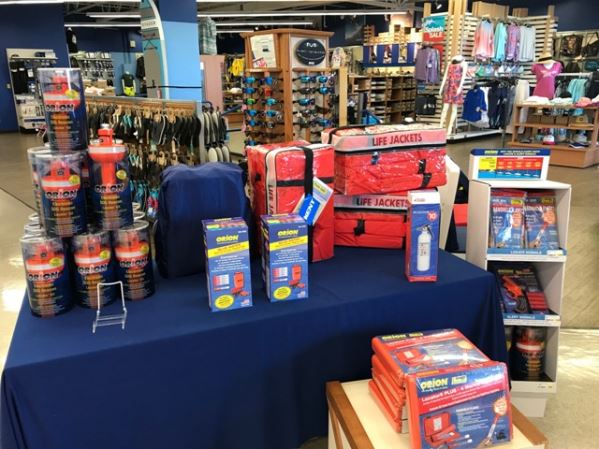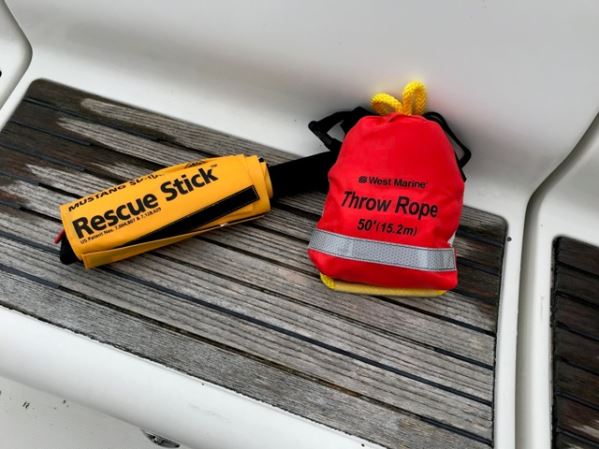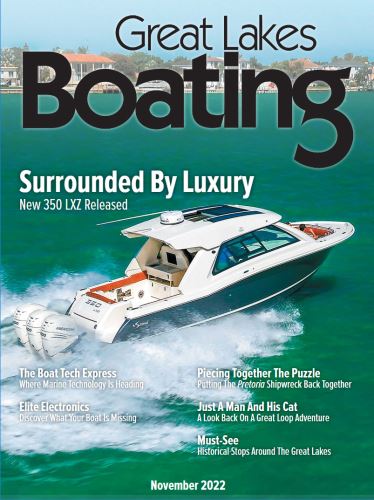 We have all seen some rather strange behavior out there on the water...and hopefully we’ve used that behavior as a learning experience. To me, boating safety is a state of mind, of preparedness and practical knowledge, as well as the tools and equipment we carry on board.
We have all seen some rather strange behavior out there on the water...and hopefully we’ve used that behavior as a learning experience. To me, boating safety is a state of mind, of preparedness and practical knowledge, as well as the tools and equipment we carry on board.
Everyone, hopefully, carries the state-specific required safety equipment on board their vessel. Here it is important to emphasize two points: First, this is the minimum required safety gear. Second: do you know how to use it?
I often ask people, “When was the last time you read your flares?” Don’t just check the expiration date. Become familiar with how to light and use them and the other safety equipment on your boat. Make sure that your family and guests know where they are stowed and have a basic understanding of how things work.
A few years ago we were delivering a boat from the Chesapeake to the Bahamas. On the last leg of the Intracoastal waterway part of the trip, before heading offshore, we decided to “play” with some of the things on board: the storm trysail, storm jib, sea anchor and a few other of those things on the boat for an offshore passage that no one ever really plans to use. It turned out to have been a good exercise, because we ended up using every bit of our severe weather gear as the winds built to over 60 knots and the seas to 30 feet or more. Practice and knowing how things work in calm weather makes them easier to use when actually needed in heavy weather.
There are quite a few online and practical resources out there to help train for safety and preparedness. US Sailing, the Coast Guard Foundation, and many other organizations offer training to help make all of us better and safer boaters.
Coast Guard Foundation, and many other organizations offer training to help make all of us better and safer boaters.
A Coast Guard Auxiliary Vessel Check is a great service which can help you determine the safety status of your boat. The Coast Guard requires that we carry life jackets, throwable Type IV, flares or visual distress signal, fire extinguishers, and horn and navigation lights (if sailing in areas of restricted visibility). It’s a good idea to check to see that all of these are in good order at least annually, particularly if you are using inflatable life jackets.
Safe boating is also about more than the equipment carried and understanding its use. Boating safety includes knowledge about the weather and how to handle it. Sailing on the Great Lakes requires some special understanding of the weather and how it impacts your boating area. Check the weather before leaving the dock and keep an eye on the horizon. There are a variety of weather resources from the VHF radio to multiple websites and smartphone applications. Weather information has never been more readily available.
One of the biggest fears for any boater is the possibility of going overboard, particularly at night. It is so important to practice crew overboard and recovery drills more than one time in a season. Many races around the Great Lakes and elsewhere are requiring that each crew member certify that overboard drills were done on the boat prior to the race. There is a lot of information about the different methods of crew recovery. So whether you want to use the Quick Stop, Broad Reach/Close Reach, Heaving To or Figure 8 method of getting back to the victim it is important to practice so the maneuver can be done without making the situation worse. Go out and practice in lousy weather and if you sail at night get out and practice then as well.
 Keep in mind that every boat responds differently in different conditions. Get to know your boat and the best method of getting to the victim. Once you get to the victim, how are you going to get them back aboard the boat? This is, again, something which needs to be thought out given the design of the boat. Boats with higher freeboard may not allow for crew on the boat to reach the person in the water.
Keep in mind that every boat responds differently in different conditions. Get to know your boat and the best method of getting to the victim. Once you get to the victim, how are you going to get them back aboard the boat? This is, again, something which needs to be thought out given the design of the boat. Boats with higher freeboard may not allow for crew on the boat to reach the person in the water.
There are some very cool things out there to help you keep track of the victim which communicate with your multifunction display and even your cell phone. Personal locator beacons and your EPIRB will send distress signals to the Coast Guard. Your VHF radio most likely has a distress button that will send a signal unique to your boat. Most inflatable life jackets come with attached whistles.
If sailing at night, it is also a good idea to attach a strobe light to the life jacket or have one that can be worn by your crew. We also require that crew going on deck after dark be tethered to the boat. The best safety procedure is to stay on the boat.
Safety is always the top priority while sailing the Great Lakes. Make it a part of your routine so that every day out on the water can be a safe one.

